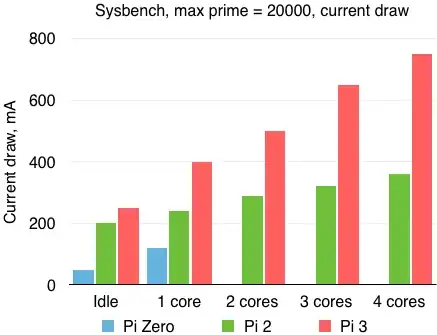There's a short piece that includes Pi 3 benchmarks over at the PiMoroni blog.
All of the benchmarks below were carried out with just a USB keyboard
and mouse connected with power supplied from the official Raspberry Pi
Power Supply, with the exception of the WiFi dongle test in which the
USB WiFi dongle was also connected. The Pis were naked, i.e. not in a
Pibow, except for the onboard WiFi in Pibow test.
...
The benchmark we used here was Sysbench, computing primes up to
20,000. This is a heavily CPU bound test and, as such, ideal for
comparing the [Pi Zero, Pi 2 and Pi 3] SoCs without side-effects from the memory or GPU.
...
Current was measured with an inline USB current and voltage meter.
The built-in Wireless LAN and Bluetooth and the more powerful
processor mean that the Raspberry Pi 3 draws about twice the current
of its predecessor when under heavy CPU load (750mA vs 360mA).

Update
...and there's a second, similarly short, piece on Pi 3 benchmarks on the MagPi site:
You can’t get extra performance without a few sacrifices. The Pi 3
draws the most power of the test group, but its extra performance
means it spends more time at idle. Those looking for maximum battery
life should look at the Model A+ or the Pi Zero as an alternative.


